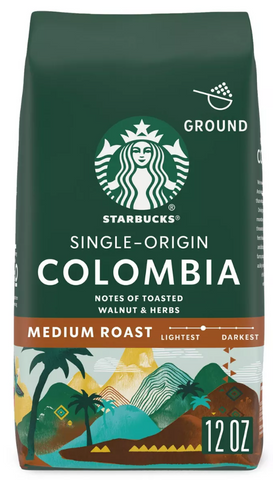Become a Coffee Snob in One, Easy Step
Question: It's always been a dream of mine to become a coffee snob, so I can look down on people in the drive-through lane at Caribou. How can I quickly become a coffee snob?
Answer: Seek out single-origin coffee.
Like most industries, coffee is full of jargon to keep you believing simple things are too complicated for anyone other than professionals to understand.
This only helps professionals, as well as people calling themselves professionals.
The rest of us don't have time for this. That's why we're drinking coffee in the first place.
So what is a coffee-chugging zygote to do to get to the next level of javaphilia? (That word means "coffee enthusiast," which would've been simpler to write, but I wanted to dazzle you with bullshit, as is fashionable for gatekeeping on the internet.)
The best place to start is to seek out "single-origin" coffee.
Why? This term straddles both the mass consumer and premium sides of coffee consumption.
Best of all, you can find it almost anywhere. Here's a bag of Starbucks I found at Target for pretty cheap:

And here's a pound of Writer's Block Coffee, which is also single-origin. It's sold at cost and gets free U.S. shipping.
Of course it's getting promoted here. It's my website.

And here's a bag of Kaya Kopi, which sells for almost $60 a pound. Its single origin is the digestive tract of a lone Luwak cat.
Yes, this is the coffee that gets pooped out of a cat first.

There's also a twist on this concept that's "refined" by elephants. It sells for $3,000 a kilo, and is single-origin as well. Presumably.
The point is to show you all the price points you can find "single-origin" coffee at. It's also to show that you can end a sentence with a preposition.
What is Single-Origin Coffee?
Single-origin coffee beans come from...
...wait for it...
...drum roll...
...a single origin!
This usually means a specific region or--if you're really lucky--a single farm.
The opposite of "single-origin" is "blend," which means the beans come from multiple sources.
What Makes Single-Origin Coffee Special?
Simply put, the environment determines the characteristics of single-origin coffee bean products more than the human touch.
Reverse that, and you've got coffee blends, where the human touch has the larger say in the final product.
Like grapes for wine, coffee cherries reflect where they are grown. Distinct flavors, aromas, acidity, and other characteristics come through depending on the environment.
Single-origin coffee beans give you the complete profile of where the cherries came from. The javaphile (sorry) gets an unadulterated taste of that profile, since there's only one origin.
In other words, your coffee has more character. And that's the first step to snobbery!
In a blend, beans from multiple sources come together to form a final product, guided by human preferences. This is not coffee snobbery, because it's the most common way coffee beans are presented to consumers.
The exception is when each of beans in a blend is single-origin.
Are you dazzled yet?
Are there Legal Definitions for Single-Origin Coffee?
No. Unlike a label that says "USDA Organic," which is regulated by law, "single-origin" can mean almost anything. Is it a single farm? A single group of farms? A single planet between Venus and Mars?
What it implies is that you'll get a product with more character than a standard blend.
That's what makes single-origin a good place to start toward coffee snobbery.
It's sort of like buying a pair of running shoes instead of a standard sneaker. You're not sprinting in the Olympics, but you're not walking to the mailbox, either.
However, if you want some fancy laces to go with those running shoes, check to see whether "single-origin" is accompanied by "farm direct." That typically narrows the geography.
Why is Single-Origin Coffee More Expensive?
The first thing you'll notice when you find single-origin coffee beans is the price. It's higher.
That's a good sign, and not just for the sake of snobbery. It's simple supply and demand.
Single-origin coffee beans come from one place, which makes them scarcer. Harvests can only happen so many times in a year. Smaller supply means higher prices.
Blends, on the other hand, can pull coffee beans from multiple sources. More options mean more supply, and lower prices.
Is Single-Origin Coffee Worth It?
The best part about single-origin coffee is that if you like it, you'll really like it. More character doesn't leave a lot of wiggle room.
On the other hand, if you don't like it, you really won't like it. You'll go back to Dunkin.
That's OK. Go to Dunkin. Or Starbucks. Or Caribou. We've all got our reasons.
But if you want to level up and explore the wide, wide, wide world of coffee, single-origin beans are an excellent place to start.
Happy hunting!
~Ben

